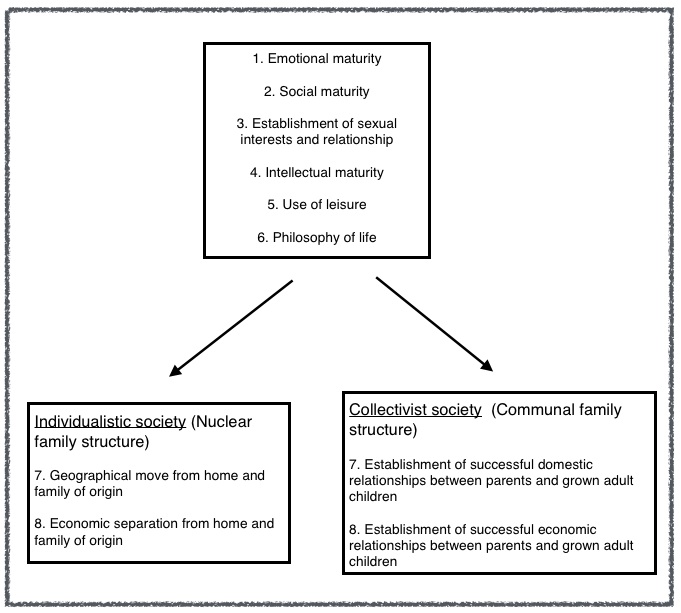Whilst recently in Serbia I presented the bipartite model of adolescent development. The first six tasks that a teenager must master are similar but on the last two they differ.
In the nuclear family structure the teenager must geographically separate from the parents. In the collectivist family structure where there is a more communal type of living the teenager does not geographically separate. However after some discussion it seems there is a geographical separation of some kind. If families can afford it houses are so constructed that they have two floors which in essence become two separate living areas or apartments. Having separate entrances and separate bathrooms is of significant importance it is reported. So it seems that collectivist family styles manage to achieve a certain level of geographical separation.
Having said this the parties are living in close proximity to one another and thus the task at hand is for the parents and the offspring to establish a successful working relationship with such close proximity. On this topic another interesting fact appeared in our recent discussion. In such societies when the parents get old the children look after them which occurs less so in the nuclear family structure. This could also have an interesting tempering effect.
Of course when the children and teenagers are young the parents have the power in the relationship. But they know that at some point this is going to change. In their older age they know the offspring are going to have the power when they are looking after them. This may lead people to be more considered in their dealing with others.
Regarding economic separation the same could be seen to apply. Some families will successfully establish successful and workable economic relationships between the parents and the offspring and others will not. Unlike the nuclear family structure who tend to have their economic circumstances separated.
The nuclear family side do some “cheating” as well. One of the primary activities when a male and female marry is the birth and raising of children. However as a structure for raising children it is poor. From a psychological point of view communal child raising has much better psychological outcomes. The parents are better able to function as child rearers by giving more to the child’s emotional needs and attachment theory has long noted there are better later in life outcomes for children raised in polymatric rather than monomatric families.
Indeed what one finds with nuclear families is they in varying degrees adopt the collectivist approach and establish a communal structure for the raising of the children. The line between the individualistic and the collectivist approaches blurs. One needs to take care when assuming a nuclear family is individualistic in its nature. One needs to take a closer look at the informal structures established before making such a judgement.
Over the years I have seen the fabric of some nuclear family marriages destroyed due to an inability or unwillingness to adopt a more collectivist child rearing structure. As any parent will tell you young children are very time and energy consuming. If one has three children under the age of six then that family is going to be under significant stress especially if one or two of the children are particularly demanding. This can result in the relationship between the man and the woman essentially being destroyed as both the Free Child ego states run for cover.
Of course this has significant implications for therapists in countries like Australia. We have long been indoctrinated by the theories of Margaret Mahler and John Bowlby who both adopt a very individualistic approach in their theories. It would seem wise to be much more understanding of the communal family structures. To stop seeing the answer as the nuclear family structure and the goal of the adolescent is to geographically and economically leave the home.


